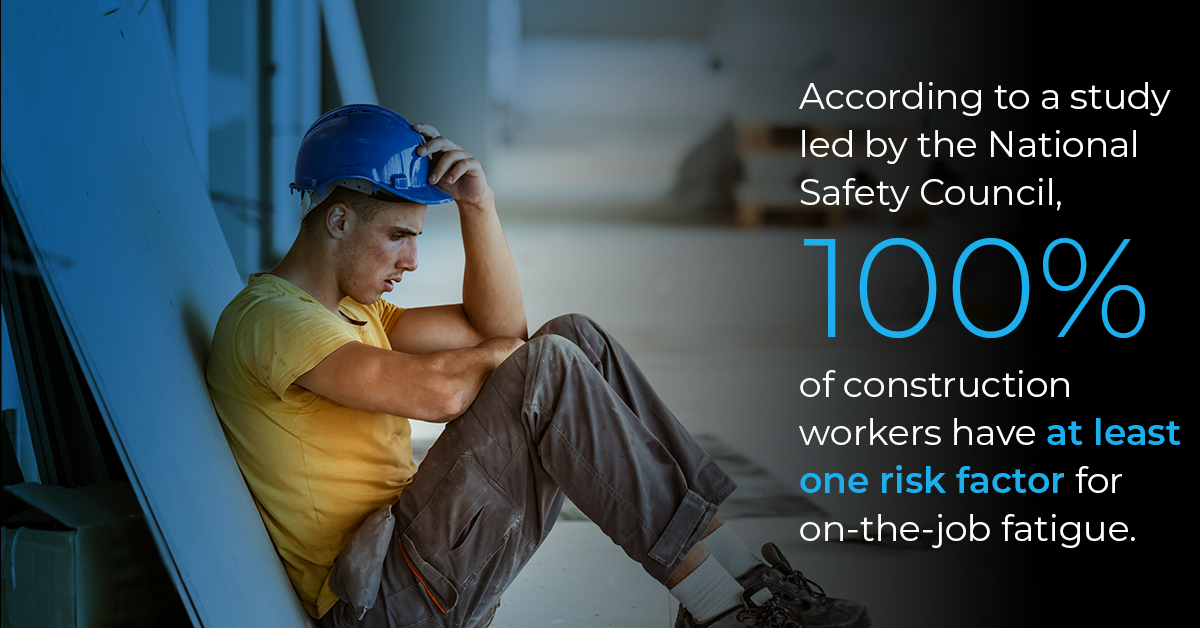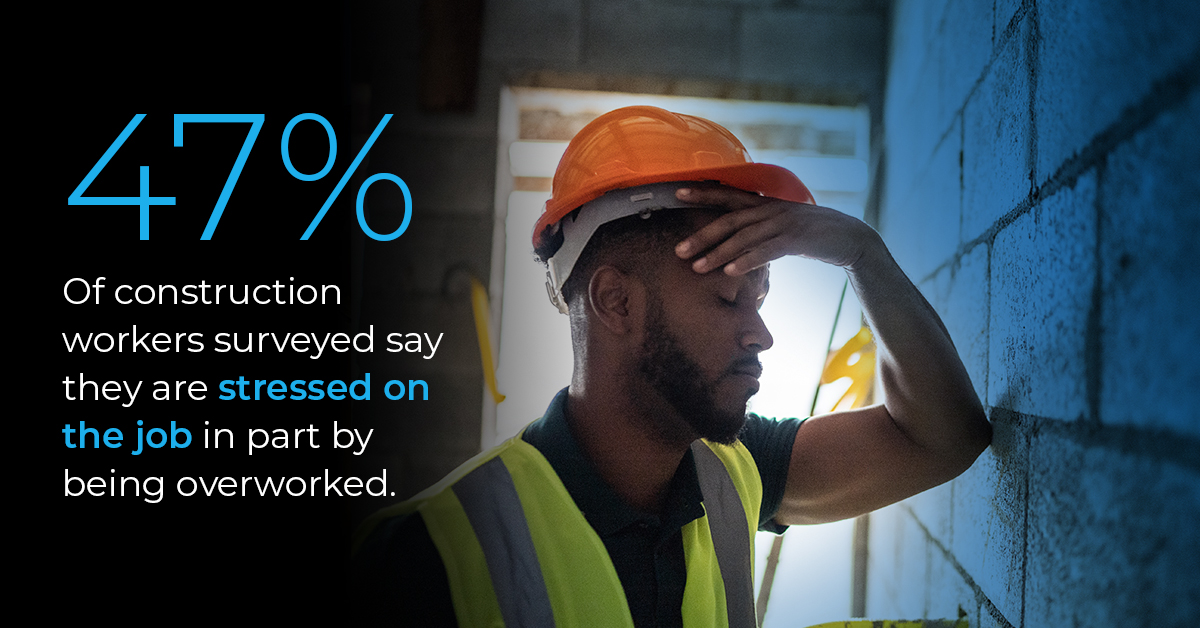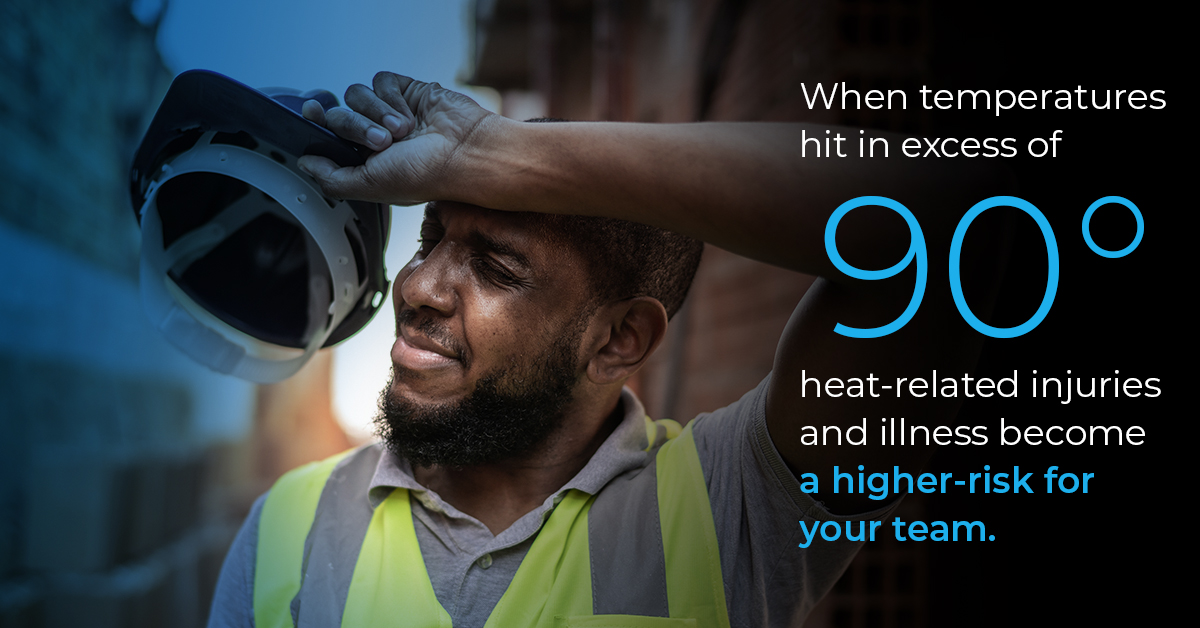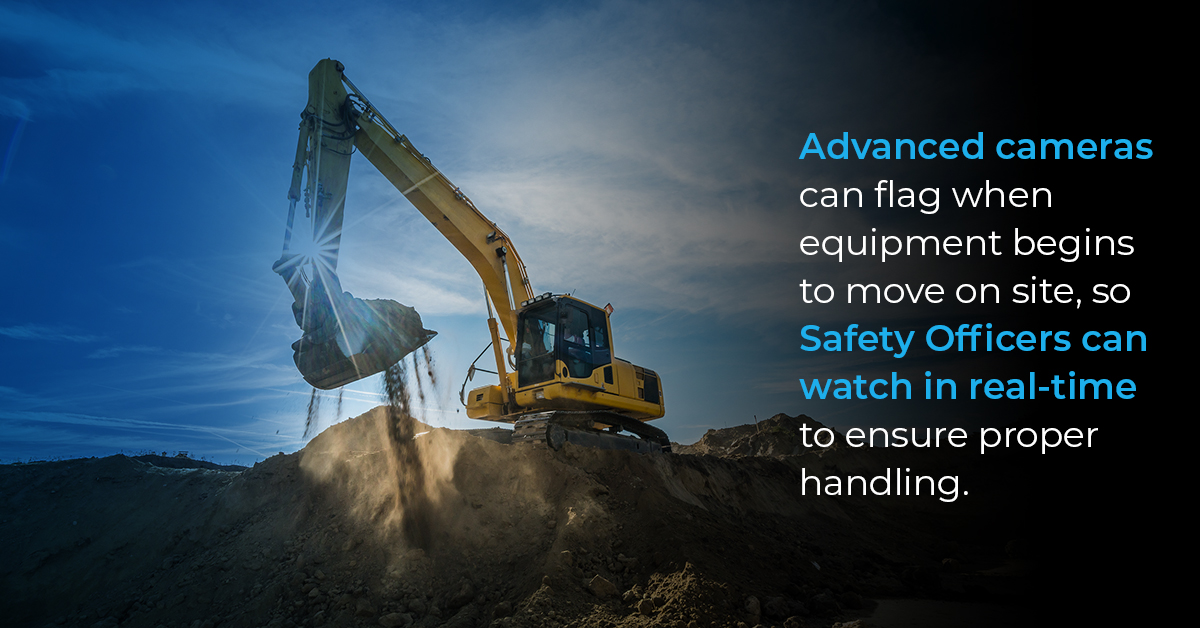The construction industry is no stranger to risk, especially around safety. Many companies have systems in place to protect teams. Site Safety Officers routinely look to enforce regulations and help prevent injuries. These programs are often centered on what’s most visible;
- Is someone wearing a safety vest?
- Are workers using equipment with the necessary precautions?
But what about the red flags you can’t see?

According to a study led by the National Safety Council, 100% of construction workers have at least one risk factor for on-the-job fatigue. And 90% of employers feel the impact of fatigue on their workers, whether that’s through an increase in safety incidents or a decline in productivity.
Fatigue isn’t easy to see on a high-level. It’s hard to identify whether one employee just had a poor night’s sleep or if the entire team is feeling overworked. But there are ways to use data to help flag concerns that go beyond PPE and traditional safety methods. In fact, 67% of civil contractors cite lower recordable injury rates as a benefit to managing safety with data.
There are three key pieces of data information that construction cameras capture to help create a holistic safety program; one that factors in wellness and mental health.
Monitor the signs for burn-out across all teams

47% of construction workers in a recent StrongArm Technologies survey say they’re stressed on the job due in part to being overworked, which means they aren’t staying present or focused.
How can you monitor on-the-job fatigue without being there? Construction camera data gives you a way to review footage to make sure regular breaks happen at appropriate times and offer visual proof that mandated breaks are being taken. You can also watch for signs of weariness or exhaustion.
Cameras allow you to gather a realistic picture of how many hours crews work across different job sites. If you notice dangerous signs of burnout — frequent absenteeism, late arrivals, and less activity on the job site due to exhaustion, sluggishness, and lack of concentration — then you can decide how to adjust schedules. You can also compare hours worked from job site to job site to see if there are workers who can be moved from a slower-pace site to one with an overworked and understaffed crew.
Use real-time alerts to mitigate weather-related injuries
Asphalt during the hot summer can easily be 40 - 60 degrees hotter than the air, with temperatures known to reach 300°F. At that level of heat, it takes only a moment to get a third-degree burn. In America alone, more than 5,000 heat-related records hit new highs in 2023. When temperatures hit above 90°F, heat-related injuries and illness become a higher-risk for your team.

Cameras are designed for extreme weather, and can operate in high-heat environments. Advanced cameras can chart weather conditions and jobsite activity in real-time, providing a way to remotely monitor heat-risks. Through a construction camera, you can ensure that teams are taking appropriate breaks at peak-hours. When there’s a heatwave of multiple 100-degree days in a row, you can then adjust protocol to rotate who is on site so that all employees are able to recover from sun fatigue.
All of this information is recorded for easy comparison and review at any time. This means that you could use the historical data to understand the impact of weather on the jobsite overall. With consistent data tracking of both activity and weather, you can identify trends that show how bad weather delayed a site or slowed down productivity.
Flag routine safety precautions as a starting point
The National Safety Council recommends using technology to help enhance health and safety, citing camera analytics and artificial intelligence tools as one of the solutions. Cameras can help monitor some of the most serious hazards associated with the construction industry, like unguarded machinery. Advanced cameras can flag when equipment begins to move on site, so Safety Officers can watch in real-time to ensure proper handling.

Creating a strong, holistic safety program, means understanding many data points can be used to address risk on the jobsite. Proper PPE and equipment usage is always necessary, and can act as a strong indicator that your team may need additional support. Consistent mistakes can be a warning sign for larger issues, like burn out. Using a camera, you’ll have access to several risk indicators so you can make better decisions regarding the care of your team.
Recognize and Respond to All Safety Threats
OxBlue’s construction security cameras make sure you recognize and address the red flags that signal a problem not only with physical safety, but also with emotional and mental well-being among workers to make sure they’re happy and healthy.
Learn more about the benefits of construction cameras.